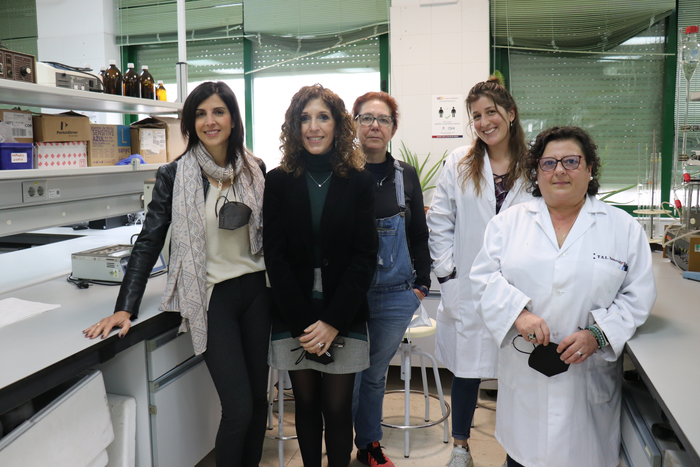Degarding wastewater pollution through mechanical aeration leads to fewer odorous compounds compared with intensive systems, suggests a new study.
 Researchers that carried out the study. Image Credit: University of Cordoba.
Researchers that carried out the study. Image Credit: University of Cordoba.
One more additional study was performed showing that the use of biofilters loaded with sludge and pruning compost are effective systems to reduce the odorous effect of sewage treatment plants.
As far as the cities are concerned, the odor that is released from wastewater treatment plants is considered to be one of the social issues that technology has been attempting to resolve for years.
The control and management systems of this kind of infrastructure have been involved in reducing the odorous and environmental impact of this waste. This directly impacts the quality of life, particularly for those who live next to the treatment plants.
Among the newest systems that have been devised by biotechnology, there are two that are on the increase and their effectiveness has been assessed: biofiltration and mechanical ventilation.
However, both were assessed in two separate studies performed by two scientific groups at the University of Córdoba.
The study has been reported in the Process Safety and Environmental Protection journal.
The first of these studies explained the work performed at a real scale at the Wastewater Treatment Plants (WWTP) in two Cordoba towns: Espiel and Villaviciosa; while the second examined the function of pilot-scale biofilters used at the facilities of the Chemical Engineering area of the University of Córdoba
In the first work, the analysis of various biological treatments of wastewater displayed that the process called the extended aeration of activated sludge, applied at the WWTP in Espiel, releases a slightly higher odor rate for every inhabitant compared to the rotating disc system utilized in Villaviciosa.
Also, it was discovered that the system in Espiel is highly intensive and efficient for the treatment of wastewater, and produces a higher amount of sludge — a by-product that could be treated properly, hence supporting the development of the Circular Economy.
As the examination of the sludge genome has displayed, the existence of denitrifying and nitrifying bacteria enables the removal of nitrogenous contaminating compounds obtained from wastewater.
The second publication examined the effectiveness of biofiltration in removing odoriferous compounds in systems that are filled with various organic waste: pruning waste — on their own or blending them with sludge compost made from the treatment plant itself.
The study outcomes displayed that when biofilters are utilized to remove acidic and water-soluble odorous compounds, like butyric acid, their efficacy was higher but lasted for a less amount of time compared to the removal of less water-miscible compounds, like D-Limonene.
Butyric acid is known as a compound that is produced in fermentation processes. This features a characteristic rancid odor, while D-Limonene is a compound that has been characterized by a citrus odor.
It must be taken into account that all the plants studied comply with the established discharge limits, and that the smell of a treatment station does not always reach the nearby populations. There is a whole process of transport and dilution of polluting odors through the environment that diminishes their perception.
María Ángeles Martín Santos, Professor, Chemical Engineering, University of Córdoba
Ángeles added, “The wind, for example, can disperse them. Hence, an essential aspect in wastewater management is where treatment plants are located. The problem is that, as a result of urbanization and rezoning, many sewage treatment plants are very close to towns, so they must be better outfitted with systems to reduce odor emissions.”
Journal Reference:
Márquez, P., et al. (2022) Activated sludge process versus rotating biological contactors in WWTPs: Evaluating the influence of operation and sludge bacterial content on their odor impact. Process Safety and Environmental Protection. doi.org/10.1016/j.psep.2022.02.071.